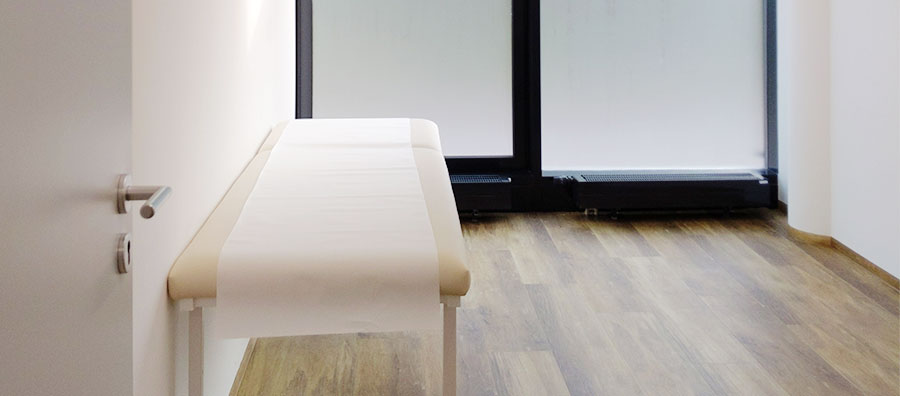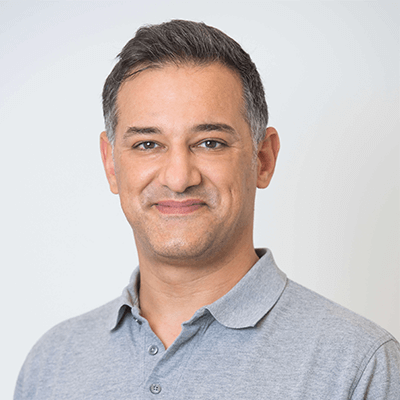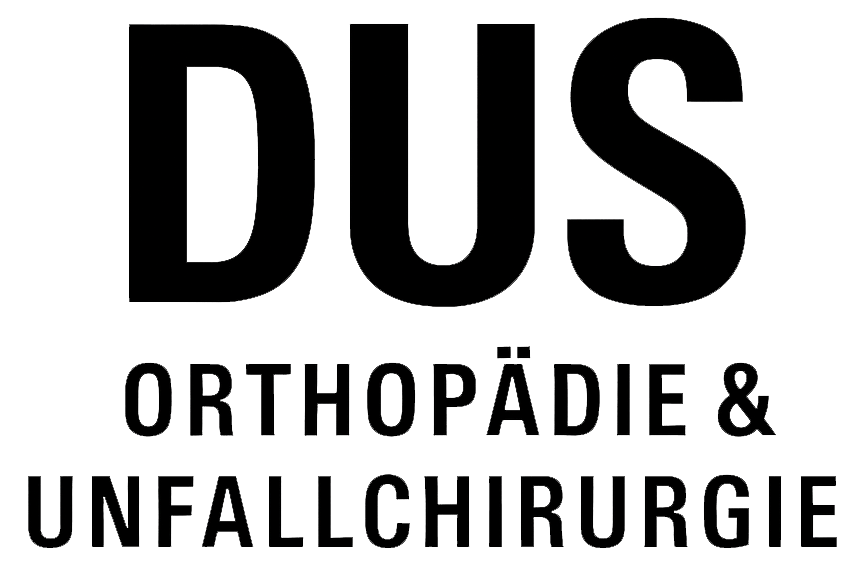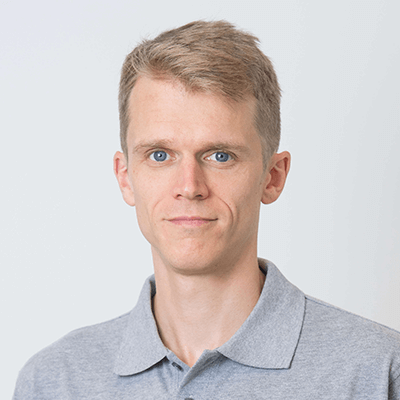Shoulder arthroscopy in Düsseldorf and the surrounding area:
Successfully treat shoulder pain
We are your practice for orthopaedic and trauma surgery, with expertise in arthroscopic operations. In the case of therapy-resistant problems of an impingement syndrome of the shoulder, which is also called constriction syndrome of the shoulder, partial or complete tears of the tendon parts of the rotator cuff or shoulder instability, e.g. after dislocation of the shoulder, shoulder arthroscopy will be able to help you.
Shoulder arthroscopy – What is shoulder arthroscopy?
Shoulder arthroscopy is an endoscopic or arthroscopic operation and can help you to quickly relieve your shoulder pain. Endoscopy also means “looking in”. Shoulder arthroscopy is also known as arthroscopy of the shoulder and is a procedure with few complications that is usually performed under a short anaesthetic.
We use a so-called endoscope for this purpose in order to be able to perform the joint endoscopy as quickly and with as little risk as possible for you as a patient. This minimally invasive procedure takes only 20-40 minutes, depending on the findings, and can quickly help you get rid of your shoulder pain.
Shoulder arthroscopy is also known as arthroscopy of the shoulder.
How does arthroscopy of the shoulder help you get better?
- Fix shoulder pain quickly: The treatment is a short and minimally invasive procedure in which we can relieve and treat injuries, inflammation or entrapment of the shoulder.
- View into the shoulder joint: During arthroscopy, we are supported by the view into the shoulder joint via video camera. We insert a camera through a small 0.5-1 cm incision. The images perfectly support us in accurately identifying and treating the damage and injuries to your shoulder.
- Low-complication surgery: The procedure is low-risk and quickly leads to being able to successfully treat the causes of your pain.

Advantages of shoulder arthroscopy for you as a patient
- Freedom from pain for the shoulder again: Arthroscopic shoulder surgery is used to treat the pain in your shoulder when conservative therapy measures fail. In case of injury, inflammation or entrapment, it can help to return your shoulder to normal.
- Minimally invasive surgery: The surgery can be described as minimally invasive, which in surgery is the surgical procedure with the least tissue damage.
- Straight home: You will be discharged home the same day.
- Outpatient: You do not have to stay in a hospital or clinic.
- Fast regeneration times: You get back to your everyday life quickly. You will be able to resume your daily routine after only a few days. They are quickly self-sufficient again and will usually regenerate quickly.
- No long downtimes: After the shoulder arthroscopy, you will be restricted for about seven to 10 days. After that, you can usually resume your work.
- Short rest period: Depending on the extent of the procedure, you as the patient may have a rest period of up to six weeks (e.g. if a tendon of the rotator cuff has to be sutured). Compared to other types of tissue, tendons need a longer regeneration time (almost six weeks) because they have a much poorer blood supply than, for example, the skin. Of course, the grace period only applies to the operated arm, which is usually fixed in an immobilisation bandage after the operation, which can be removed for dressing or showering.
- Driving after shoulder arthroscopy: Depending on the individual regeneration time, most patients can drive again after just one week.
Brief information on arthroscopy of the shoulder
| Procedure: | Arthroscopy of the shoulder |
| Duration: | 40 to 60 minutes |
| Anaesthesia: | Short general anaesthesia |
| Fit for society: | Approx. 5 to 7 days |
| Rest period after the procedure: | From 4 to 5 days up to 6 weeks |
Specialists for shoulder arthroscopy in Düsseldorf: Trust our expertise

Orthopaedic practice – on arthroscopic operations
Our orthopaedic surgeons have all the theoretical and practical skills and the necessary structures to perform arthroscopy on your shoulder in Düsseldorf. Our expertise concerns the repair of impingement syndrome (which is also called constriction syndrome), the removal of an inflamed bursa (also called bursitis subacromialis) and problems of the rotator cuff in terms of a rotator cuff tear. These tendon tears and shoulder instabilities can be successfully treated during an arthroscopic shoulder operation. We are also able to examine and treat existing arthrosis of the shoulder joint.
Many years of experience through our experts in orthopaedics and trauma surgery
You can rely on very high experience and safe routine in orthopaedic and trauma surgery operations. This security also results from many years of professional experience as senior physicians in renowned hospitals.
Care and treatment of our patients from A-Z
You as our patient will be accompanied 1:1 by our practice for orthopaedics & trauma surgery. From the examination and diagnosis to the operation – from the prescription, wound checks to the certificate of incapacity for work – we are there for you for all your needs. You will have no unnecessary journeys and will find us your fixed point of contact for all questions and wishes relating to shoulder arthroscopy.
Provide therapeutic support for your shoulder after the arthroscopy has been performed:
In order to regenerate more quickly, we offer you accompanying measures that can strengthen your regeneration time and the success of the therapy:
Autohaemotherapy
Autologous blood therapy offers you as a patient a low-risk, chemical-free alternative to injections with cortisone, among others, and helps you to regenerate more quickly. By using the natural regenerative powers of your own blood, autologous blood therapy can help your shoulder heal faster after arthroscopy or even prevent surgery.
Learn more about autohaemotherapy »
Hyaluronic acid therapy
Hyaluronic acid therapy has already been used for decades in the therapy of joints. As a therapy after arthroscopies, it helps to improve the gliding ability of the cartilage and strengthen the function of the shoulder joint. It has been a widely used method in the therapy of joints for decades.
Learn more about hyaluronic acid therapy » coming soon…
Shoulder arthroscopy – application for problems of the shoulder:
Shoulder help through the keyhole – Arthroscopies /endoscopic procedures are also called keyhole surgery. Shoulder arthroscopy helps them with:
- Impingement of the shoulder or constriction syndrome of the shoulder (among other things, in the case of reduced distance between the acromion and the humerus)
- Bursitis of the shoulder – Bursitis subacromialis
- Calcified shoulder – calcification of the tendons of the shoulder – tendinosis calcarea
- Tear of the tendon plate of the humerus bone which is responsible for the abduction or rotation of the upper arm – rotator cuff tear.
- Dislocation of the shoulder with labral damage – Bancart lesion: Condition after dislocation of the shoulder with injury to a joint lip of the shoulder joint socket, which stabilises the upper arm bone in the joint.
- Tendon ruptures due to accidents
- Shoulder instability
- Shoulder stiffness after prolonged immobilisation of the shoulder – frozen shoulder
- Wear and tear of the shoulder corner joint – ACG arthrosis
- Inflammation of the long biceps tendon – LBS tendinitis
- Cartilage wear of the shoulder – Arthrosis of the shoulder
Shoulder arthroscopy procedure – Everything you need to know

Before the operation
Examination & Diagnosis – We will welcome you to one of our practices and take plenty of time for you. A thorough examination and diagnosis will answer all your questions and inform you about the problem and pain in your shoulder.
Choice of appointment – If shoulder arthroscopy is recommended, we will arrange a suitable date for this procedure with you.
Clarification – In the run-up you will learn everything about the planned operation. We will give you a thorough explanation and tell you all the advantages and disadvantages. We will talk to you about alternative therapy options and conservative therapies. We want to accompany you and enable you to be in the picture at all times.
The day of the operation
Reception at the surgery centre – On the day of the surgery, the surgeon will meet you at the agreed location.
Outpatient procedure – As a rule, shoulder arthroscopy is performed on an outpatient basis and takes place under a short anaesthetic. However, depending on the state of health and care at home, it can also be carried out on an inpatient basis. We will talk to you about your individual options.
Minimally invasive surgery – The surgeons perform shoulder arthroscopy through two to three incisions, each 0.5-1 cm in size, in the shoulder joint. With the help of a small camera and the use of special instruments, the local damage is detected and repaired.
Duration of the procedure – This minimally invasive operation usually takes between 20-40 minutes and can quickly lead to a positive result and significant pain relief for you. Greater damage to the tendon plate, the so-called rotator cuff, can prolong the operation time as the reconstruction requires more time.

The operation from the surgeon’s point of view
Operation procedure
Then the arthroscope is advanced into the space between the acromion and the rotator cuff. Here, the bursa is inspected and minimally invasively removed via a separate access using appropriate instruments. Depending on the findings, a so-called subacromial decompression or a suture of the rotator cuff can be performed. Sometimes this is also done in combination.
The shoulder arthroscopy takes about 20-40 minutes, depending on the findings.
The skin is then closed with sutures and sterile plasters are applied.
Depending on the findings, the insertion of a Redon drain may be necessary. The Redon drain is a tube in the joint to which a small plastic bottle is attached to allow the blood and wound water to drain. This is removed the following day during the first dressing change in our practice.
Finally, the operated arm is immobilised in a kind of stabilising shoulder bandage which should usually only be worn for 3-4 days, preferably at night.
If the rotator cuff or the labrum has been sutured, it should be used for a period of 6 weeks.
Sterile washing and draping
Then sterile washing and sterile covering of the surgical area with the sterile drapes is performed according to established hygiene standards.
To prepare for the operation, all the necessary instruments (suction, irrigation connection, light cable, etc…) as well as preparing and connecting the camera to the arthroscope are performed.
Anaesthesia & Preparation
Team Time Out
The patient is identified, the planned operation is briefly discussed, the location of the operation is repeated and confirmed, and the sterile and complete availability of the instruments required for the operation is reconfirmed.
After shoulder arthroscopy
Follow-up check on the following day – On the following day, we will ask you to come to our practice for a follow-up check, where we will discuss the further procedure with you. You will be given appointments to check the wound and remove the stitches.
Removing the stitches – Ten to twelve days after the shoulder arthroscopy, the surgical stitches are removed.
Physiotherapy – This is usually followed by physiotherapy treatment, usually in combination with lymphatic drainage. Over a period of about three weeks and two to three exercise days a week will support your shoulder recovery.
How long are you restricted as a patient?
Back in motion – Patients can often fully use their operated shoulder after only three to four days and can even manage without pain medication. As a rule, you will quickly be independent again.
Quickly back to everyday life – After ten to twelve days at the latest, you will be fully operational again. Depending on how active and fit you are and how your general physical condition and activity level is, you will quickly be able to resume your usual daily routine. However, if the rotator cuff has been sutured or the labrum refixed, a stabilising shoulder bandage should be worn for a period of almost six weeks. In this case, the operated arm can certainly be used for smaller activities such as holding a plate.
Our expertise in arthroscopic surgery:
Our doctors are specialists in orthopaedics and trauma surgery and, in addition to arthroscopic operations in the field of orthopaedics and trauma surgery, specialise in shoulder operations, among other things:



LOCATION
Location Düsseldorf-Stockum
Orthopaedist Düsseldorf: Dr. med. Leonid Blüm
Location Düsseldorf-Grafenberg
Orthopaedist Düsseldorf: Panagiotis Karachalios, Dr. Leonid Blüm, Gökhan Dogan
Location Düsseldorf-Oberkassel Heerdt
Orthopaedist Düsseldorf: Alain Dalemans, Turan Ocak and Christopher Arnold


